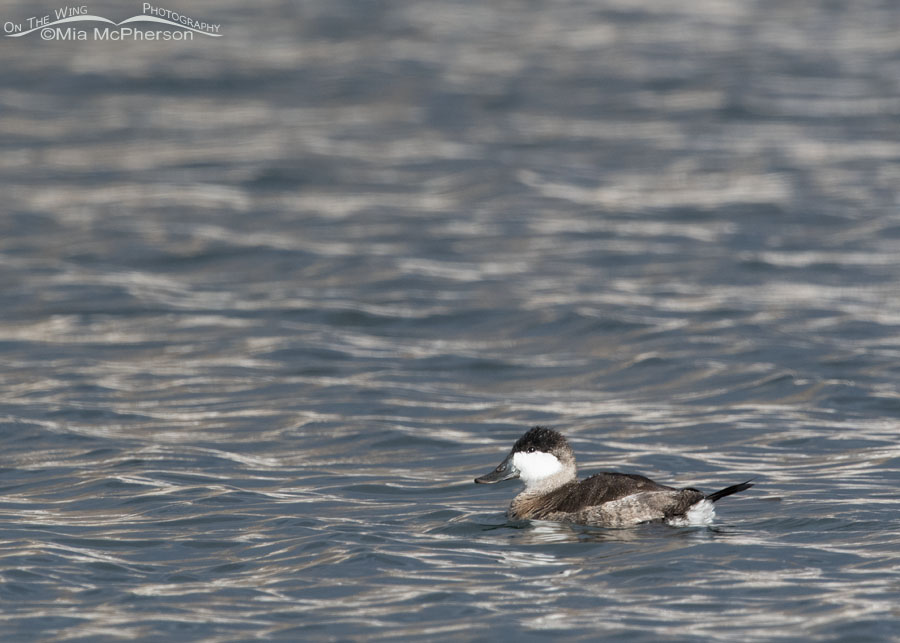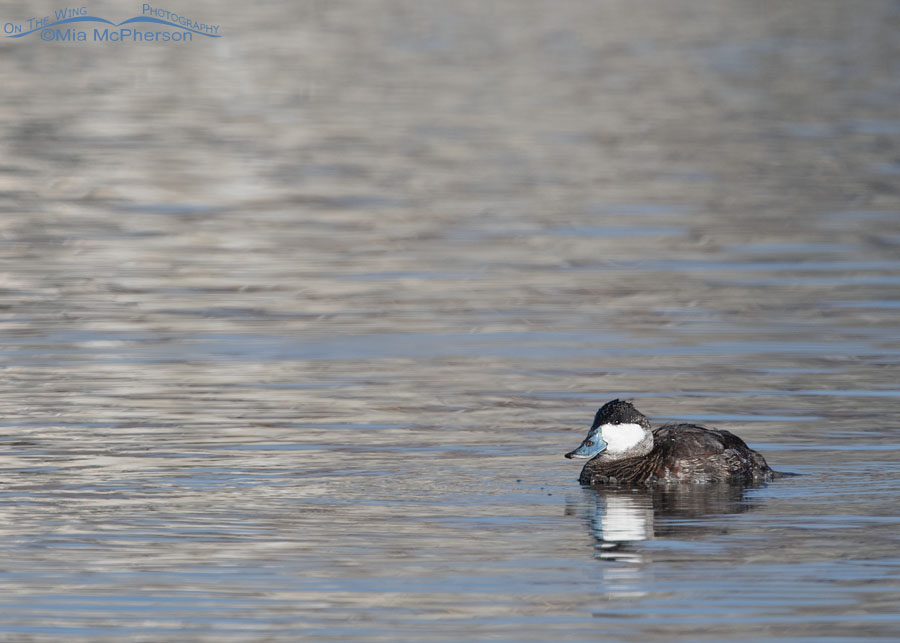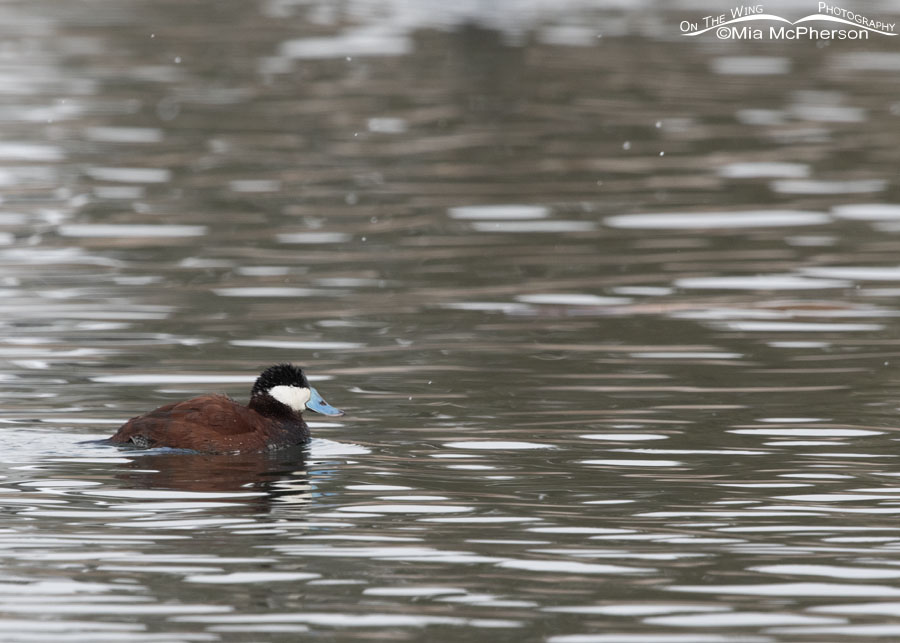I’ve been paying a lot of attention to a drake Ruddy Duck at my local pond because he has gone into breeding plumage earlier than is normal for this species.
 Ruddy Duck drake on November 25, 2023 – Nikon D500, tripod mounted, f8, 1/2000, ISO 1000, Nikkor 500mm VR with 1.4x TC, natural light
Ruddy Duck drake on November 25, 2023 – Nikon D500, tripod mounted, f8, 1/2000, ISO 1000, Nikkor 500mm VR with 1.4x TC, natural light
The Ruddy Duck drake was in nonbreeding or Definitive Basic Plumage on November 25, 2023. He and his presumed mate had arrived at my local pond on November 14th.
At that time, the drake had just barely a hint of blue on his bill. His bill was the only thing that stood out to me on that November day.
I’ve shared the first two images on a previous post about this drake Ruddy Duck which can be seen here.
 Ruddy Duck drake on December 15, 2023 – Nikon D500, tripod mounted, f8, 1/2000, ISO 640, Nikkor 500mm VR with 1.4x TC, natural light
Ruddy Duck drake on December 15, 2023 – Nikon D500, tripod mounted, f8, 1/2000, ISO 640, Nikkor 500mm VR with 1.4x TC, natural light
Typically, this diving duck species isn’t in full breeding plumage until around March, which is later than most other male ducks in North America.
But on December 15th when I saw and photographed this drake I could see that his bill was already mostly blue and that there were chestnut colored feathers on his flanks.
His appearance puzzled me because it seemed early for him to be transitioning into breeding plumage.
 Drake Ruddy Duck almost in breeding plumage on January 13, 2024 – Nikon D500, tripod mounted, f8, 1/800, ISO 800, +1.0 EV, Nikkor 500mm VR with 1.4x TC, natural light
Drake Ruddy Duck almost in breeding plumage on January 13, 2024 – Nikon D500, tripod mounted, f8, 1/800, ISO 800, +1.0 EV, Nikkor 500mm VR with 1.4x TC, natural light
Life is good.
Mia
Click here to see more of my Ruddy Duck photos plus facts and information on this species.


How fascinating. And how useful your knowledge to identify this anomaly.
Good observation! And your ability document the connections you have made becomes a useful record. Thank you for sharing your insights. I wonder if you have any pictures from previous years that could compare similar timelines.
Very nice documentation of plumage change. Thanks